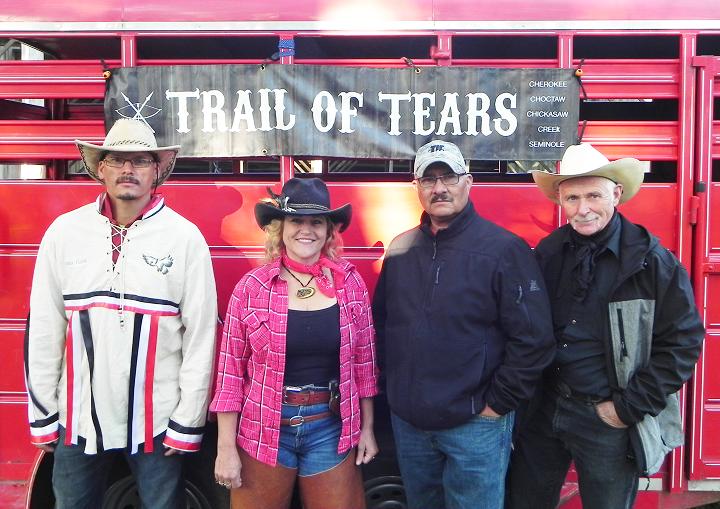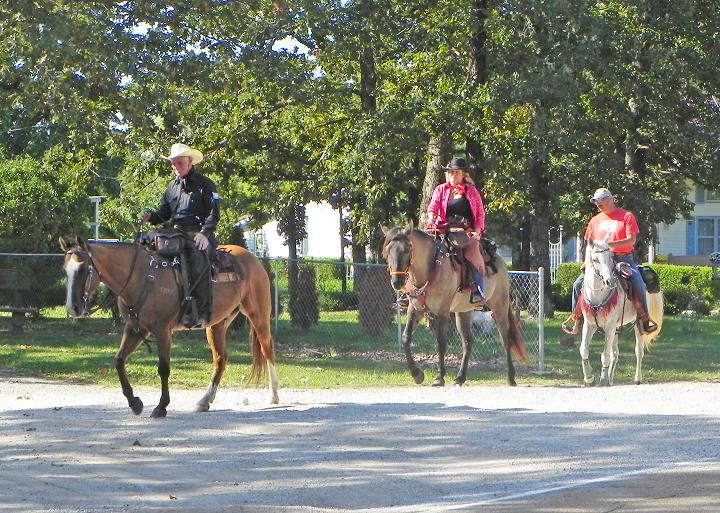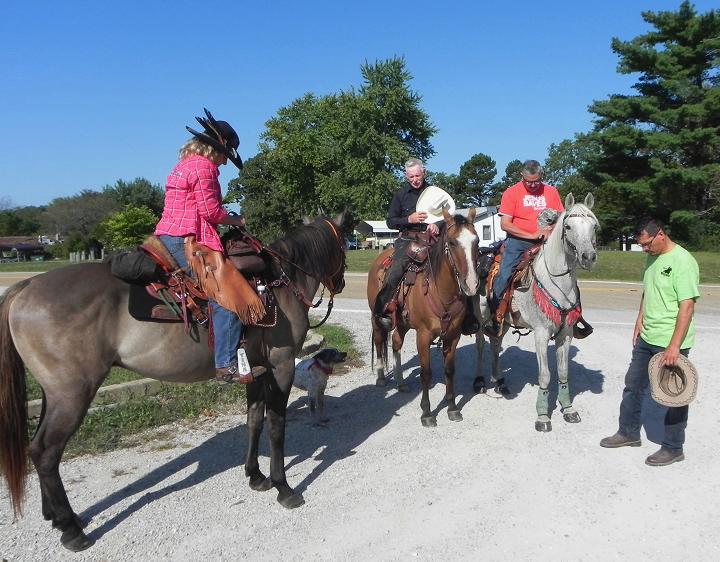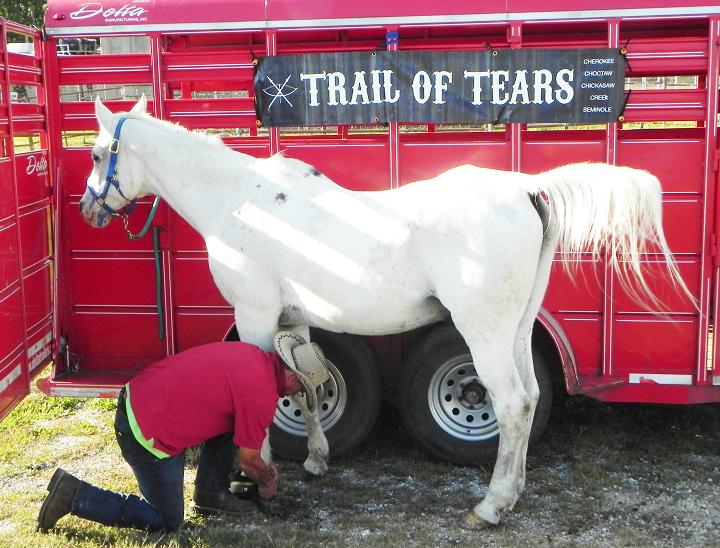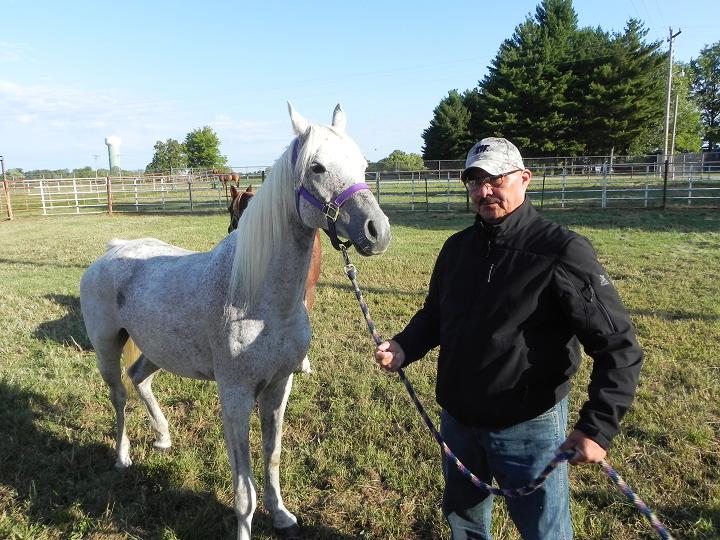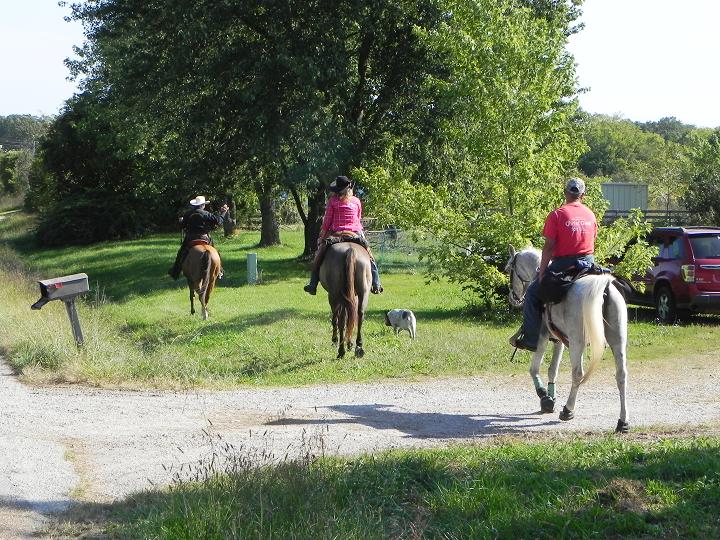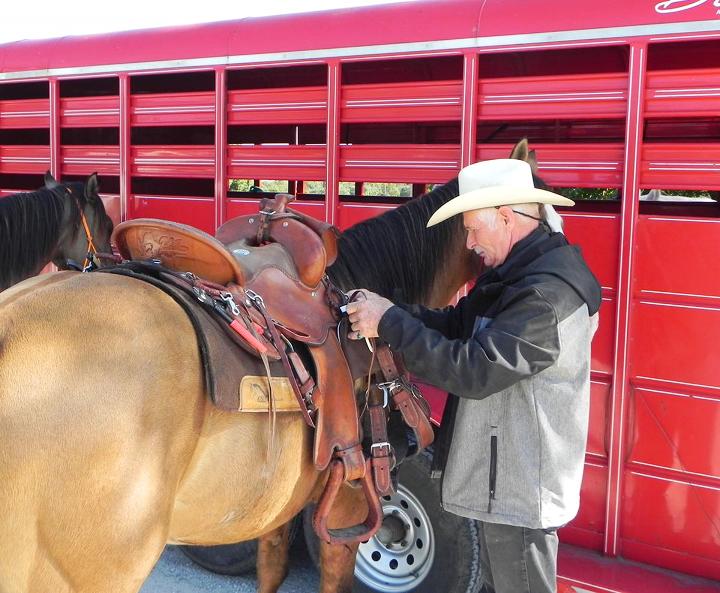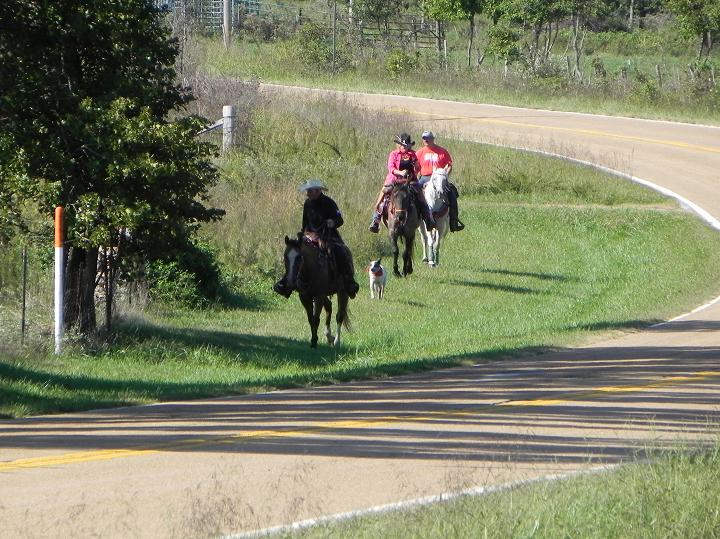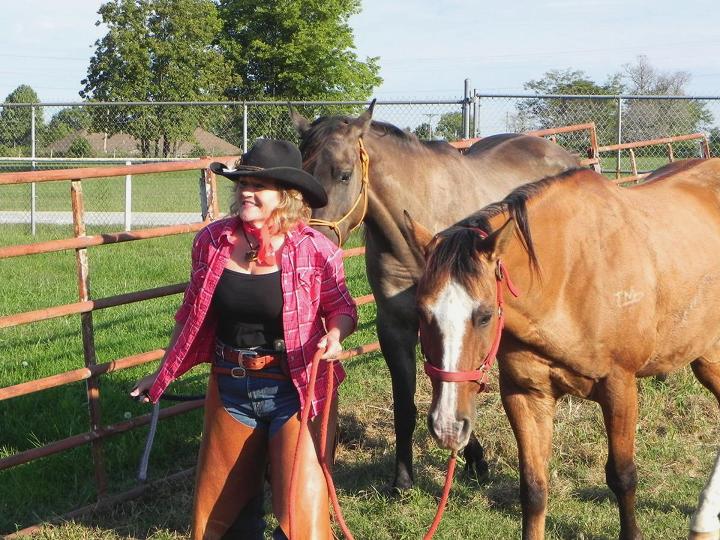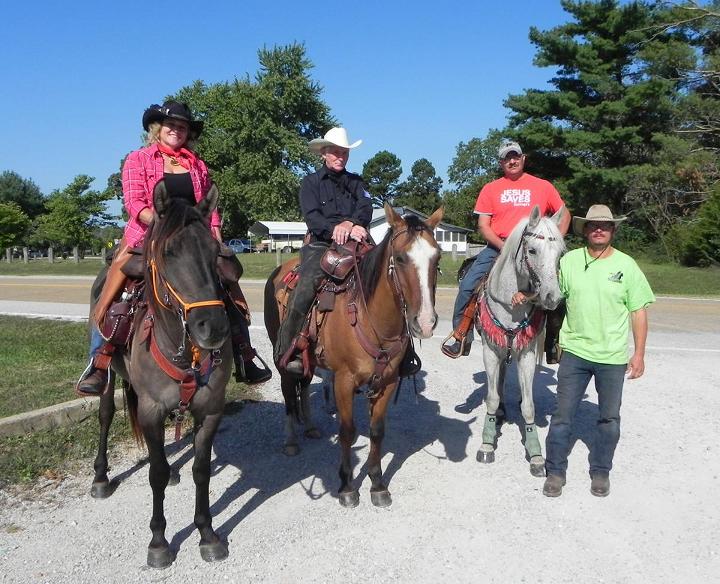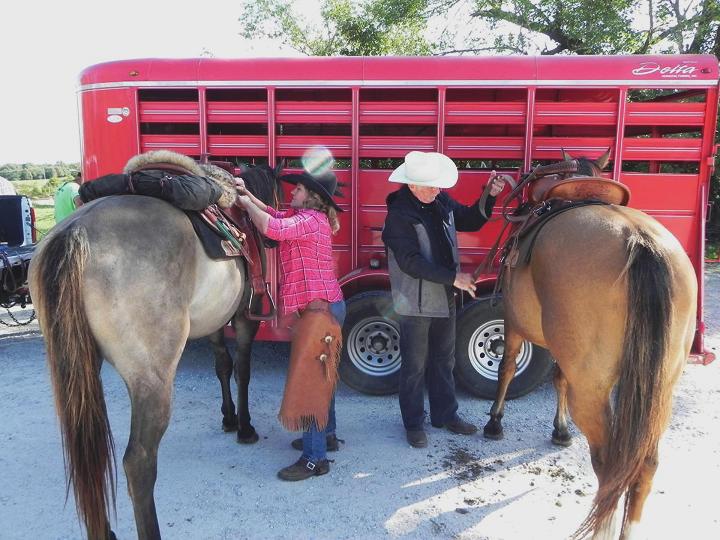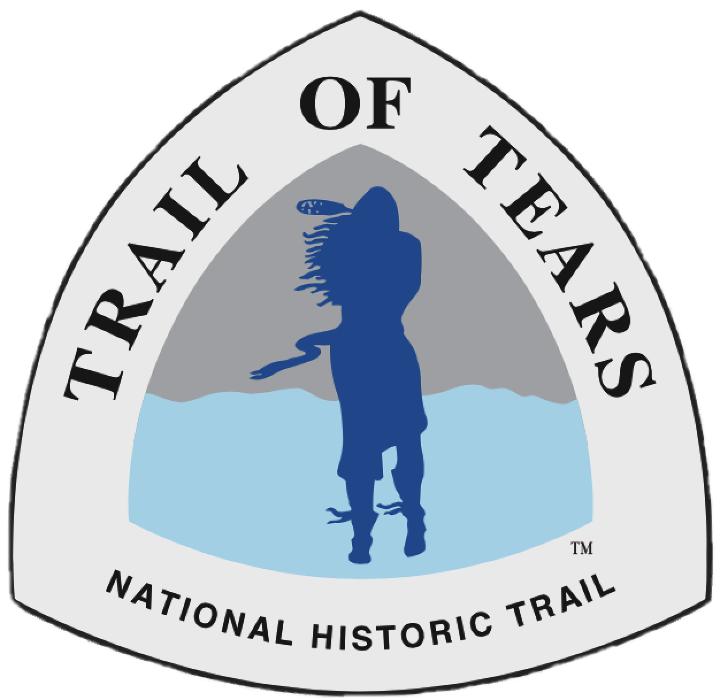 |
Canku Ota
|
 |
|
(Many Paths)
|
||
|
An Online Newsletter
Celebrating Native America
|
||
|
November 2018 - Volume
16 Number 11
|
||
|
|
||
|
Riding On A Path
Of Sorrow
|
||
|
by DOUG DAVISON - Houston
Herald - ddavison@houstonherald.com
|
||
|
Group
Follows Cherokee Trail Of Tears On Horseback
While many Americans have heard the phrase "Trail of Tears," most are not fully aware of its meaning. Others are entirely unfamiliar with it. A group consisting of one woman and three men are on a lengthy horseback ride as part of a multi-layered mission to bring awareness to what was arguably one of the darkest set of events in U.S. history. That mission passed through Texas County for a few days in late September. WHAT HAPPENED During the first half of the 19th century, several large groups of Native American people were forced to relocate from their ancestral homelands in the southeastern U.S. to areas to the west that were designated by the federal government as "Indian Territory." Carried out by government authorities following the passage of the Indian Removal Act in 1830, the series of relocations primarily involved the Cherokee, Creek, Seminole, Chickasaw and Choctaw nations. Their westward treks became known as "The Trail of Tears," as countless participants suffered from exposure, disease and starvation – or simply died – on the way to their undesired destinations. The relocations typically took place in winter months, and the Indians were not well equipped for traveling in what were often bitterly cold conditions. President Andrew Jackson played the leading role in the actions, as Indian removal was his main legislative objective prior to taking office in 1829. By the late 1830s, some 46,000 Native Americans had been relocated, mostly to land in what is now Oklahoma. The process opened up about 25 million acres for settlement, mainly by white European immigrants. Arguably the most famous relocation was that of the Cherokee Nation in 1838. Before reaching their designated reserve, Cherokees traveled across Tennessee, Kentucky, Illinois, Missouri and Arkansas – most on foot, but some by horse, wagon or boat. THE MISSION Cherokee detachment leader Peter Hildebrand led a large contingent along a path that went through Missouri. The four riders who recently passed through Texas County are following the Hildebrand Route as closely as possible on an 1,100-mile trek from Talequah, Okla., to Cherokee, N.C. The participants in what is labeled "Ride for Missions 8" are Tina Mae Weber (a resident of Bourbon, Mo., who is a professional "trail rider" and designs and sells many products related to horses and riding), Len Crow (a pastor from Ontario, Canada who began organizing and leading mission rides in 1996), Bennie Halwood (a full-blooded Navajo from Arizona) and Lee Standingready (a Lakota Sioux from Ontario, Canada). The foursome began their journey Sept. 11 and hope to finish it in mid-November.
"We're riding the Trail of Tears in reverse for the psychological aspect of returning home rather than being marched across the country to captivity," Crow said. "These people lived in beautiful places and had everything going for them," Weber said. "Then they were thrown onto pretty much barren land. It's quite sad. And it's forgotten." "It's like people are trying to erase history," Standingready said. "And yes, it's a bad history, but I've heard the saying that if we don't learn from history, we're doomed to repeat it." "It's kind of a black eye in American history," Crow said. "There's nothing nice about it, but the fact is it happened and to just shun it doesn't resolve anything." One of the mission riders' goals is to bring light to present struggles being endured by Native Americans, as well as those of the past. They're also raising funds for two specific tribes facing significant financial hardship: The White Mountain Apache in Arizona and the Crow in Montana. "Those reservations are also dealing with things like substance abuse and rampant suicide," Crow said. "And it's not just adults being affected; it trickles down to teenagers and children. We're hoping we can help make a difference to break that chain of events." PROMOTING EDUCATION Crow (whose last name
belies his Scottish decent) said helping Indians requires more than
just giving them money. "We want to educate the young men on the reservations – and there are ministries there doing that – about plumbing, electrical, carpentry and welding so they have something to offer as far as a trade or skill when they leave the reservation," he said. "What often happens is they get addicted and want to break away from it, and they leave the reservation, but when they go to get a job, all they can make is minimum wage. Then they can't afford to look after themselves, let alone their families, and they end up getting into financial trouble, back into substance abuse and find themselves back on the reservation. "Some are even living homeless on the reservation." The average person doesn't realize these struggles are even happening, Crow said. "We really live in a bubble in North America," he said. "I don't know if it's willingly as much as it is that we have to be responsible for our families, we have jobs and we have to care for our finances, and we get so busy that we don't have time to reflect."
The riders' idea is to burst that bubble to whatever extent possible. "The biggest thing is bringing awareness to our people," Standingready said. "I sometimes feel as if we're treated as second-class citizens, and we're not – we're just as important as everybody else. I understand that things that have happened to our people have caused a lot of hurt and turmoil; I'm not saying that's an excuse, but the drugs and the alcohol are an escape and people are running to what they know feels comfortable. "Unfortunately, that's not the way to go."
The Navajo reservation is the largest in the nation, and is a bit bigger than West Virginia. "I would also say that Native Americans are a forgotten people in this country," Halwood said. "The Navajo people really don't have anything and there are no jobs for them. My reservation is very remote; the nearest place to shop at a Walmart or Home Depot is about three hours away, and a lot of the people don't even have electricity or running water. "There are people drinking hairspray or anything else that has alcohol just to get away from their depression." A REMEDY OF HOPE Crow, Halwood, Standingready and Weber all believe there's another form of education that can help Native Americans. "We want to share the gospel," Crow said. "We believe that hopelessness comes from a vacancy inside that can be filled by knowing the Lord Jesus Christ as their savior."
"A while ago," Standingready said, "the Lord put it on my heart to reach my own people. Having them see what the Lord is doing in me is why I'm on this ride. Especially my dad, who is very traditional; the Lord has already done so many amazing things on this ride, and I'm hoping all this will help him see the Lord." Halwood is a Christian preacher and helps launch churches on the Navajo reservation. He's also affiliated with a church in Tennessee and travels there frequently. "When I put my trust in the Lord as my savior, that's what really opened my mind to explore and have peace and not go so low as so many of my people are doing," Halwood said. "I like to let people know there is a God they can turn to, but it's hard because of history. There is still a lot of animosity over what happened, and people say 'that's white man's religion, that's white man's book and white man's clothes; why do you have to present this to us after all that happened?' "Sometimes I almost feel like pushing away the Bible and just going back to helping my people. But I have a savior in me who always tells me, 'you have to do this so the people can have a better life.'" To Halwood, riding the Cherokee Trail of Tears is bittersweet experience. "When I ride this trail, I look through the trees and I can see these people walking – I can sense that," he said. "I can see them crying, they have no shoes, they're hungry and they have no place to sleep. It hits me hard as an American Indian, that's why I sometimes just stay at the back. I have to take it all in."
But there have been a few lighter moments, too. "Once when Lee and I were behind Len and Tina Mae, I said, 'look; it's like we're chasing the white man home,'" Halwood said. "We both laughed." Making time for a two-month ride for this cause is worthwhile, Crow said. "Everyone has sacrificed to be here," he said. "Lee sold his business to be on this ride, Bennie has taken time away from his family and ministry and Tina Mae has taken time away from her family and business. And it's not for selfish reasons – we could go horseback riding anywhere; I could put my horses in the trailer and head for the Rocky Mountains, which is where I desire to be rather than road-riding. "But's that not what the Lord laid on our hearts to do."
"There are days when it's hard to be in the saddle so long," Standingready said. "And this isn't an easy trail; there are a lot of rough areas and even high traffic." "It's not like a nice ride in the mountains," Weber said, "where you've got the streams and you're just enjoying the ride. But this is something with a mission behind it. That's what's driving us." WORLD MISSIONS ON HORSEBACK Other mission rides organized by Crow include a journey across the Judean Desert in Israel (from the Mediterranean Sea to the Dead Sea) to raise money for widows and orphans of fallen soldiers. The longest was a 7,000-mile, year-long expedition from the Arctic Ocean in Alaska to southern Mexico to raise funds for orphanages in Mexico, Guatemala, the Philippines and Cambodia. During mission rides all over North America, Crow has passed through several Indian reservations. "They've always treated me well," he said. "They've fed me and my horse, I've slept in their homes and they've given me good advice. This year, the Lord laid on my heart to give back for all the generosity they've shown me."
Crow's connection with Weber happened about two years ago when she had him on her radio show during one of his mission rides. "When I found out about this Trail of Tears ride and what's behind it, I told Len I would be honored to join them," Weber said. Standingready got involved in Ride for Missions 8 through being a member of Crow's church, while Halwood's connection comes from when Crow visited the church in Tennessee about a year ago. While in Texas County, the four riders and their support group (consisting of relatives, friends and several vehicles) set up camp adjacent to the rodeo arena at Licking City Park. "We really want to thank the city for letting us use the space," Weber said. "The people here have been wonderfully accommodating."
"There's nothing nice about it, but the fact is it happened and to just shun it doesn't resolve anything." LEN CROW
MORE INFORMATION For more about Tina Mae Weber and her products, log onto www.trailride.horse or go to her Facebook page. |
|||||||||||||||||||||||||||
|
|
||
|
|
||
| Canku Ota is a free Newsletter celebrating Native America, its traditions and accomplishments . We do not provide subscriber or visitor names to anyone. Some articles presented in Canku Ota may contain copyright material. We have received appropriate permissions for republishing any articles. Material appearing here is distributed without profit or monetary gain to those who have expressed an interest. This is in accordance with Title 17 U.S.C. Section 107. | ||
|
Canku Ota is a copyright ©
2000 - 2018 of Vicki Williams Barry and Paul Barry.
|
||
 |
 |
|
|
The "Canku
Ota - A Newsletter Celebrating Native America" web site and
its design is the
|
||
|
Copyright ©
1999 - 2018 of Paul C. Barry.
|
||
|
All Rights Reserved.
|
||
